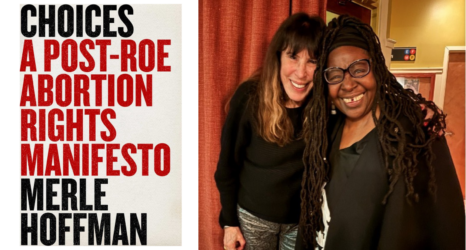“The bosses acted as if women were unqualified to do anything except type, file, staple papers, collate, alphabetize and make photocopies and coffee,” said Ellen Cassedy, founder of 9 to 5, the national association of women office workers.
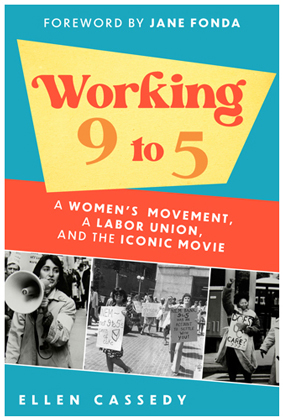
Shortly after Ellen Cassedy graduated from college in 1971, she joined her friend Karen Nussbaum as an office worker at Harvard University. The pair—close friends who first met as undergraduates—quickly began speaking with other female typists and administrative assistants about the need for better pay, better working conditions, and better and more respectful treatment from their often-condescending male bosses.
Within a year, the initial group of 10 Boston-based women went from grousing about their jobs to forming 9 to 5, a bold labor rights organization that eventually became a model for innovative workplace activism throughout the country.
Cassedy’s account of those years, Working 9 to 5: A Woman’s Movement, A Labor Union, and the Iconic Movie, is part memoir, part political history and part prescriptive look at the ongoing challenges facing workers today. But as much as it acknowledges how much remains to be done to achieve racial and gender equity on the job, it also celebrates 9 to 5’s many successes.
“We took on the most powerful companies in the world,” she wrote in the book. “We won millions of dollars in back pay and raises, improvements in hiring and training, and career ladders that enabled women and people of color to move into higher-paying jobs.”
And of course, they had fun as they called out the egregious sexism, racism and classism they routinely experienced.
Cassedy spoke to Ms. reporter Eleanor J. Bader in late January.
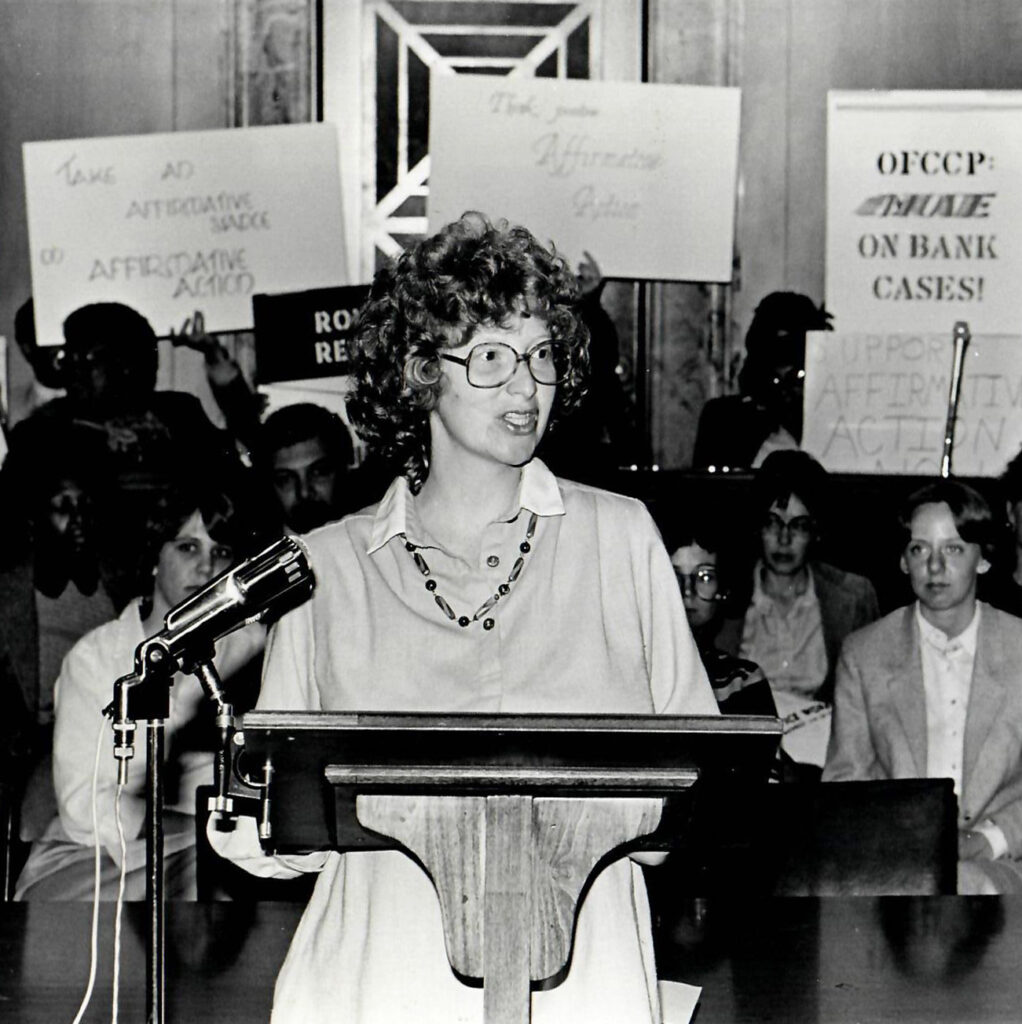
Eleanor Bader: How much of an obstacle was the idea that white women only worked until they got married and only needed “pin money,” in the early days of 9 to 5?
Ellen Cassedy: It was huge. It was one of the reasons companies could get away with keeping women in low-paying, entry-level jobs. The bosses acted as if women were unqualified to do anything except type, file, staple papers, collate, alphabetize and make photocopies and coffee. Worse, when they weren’t treating us like decorative objects, they treated us as if we were invisible.
Bader: In 1973, the newly formed 9 to 5 sent you to Chicago to be trained as an organizer at the Midwest Academy, a school that had been co-founded a few months earlier by Heather Booth. Was feminism integral to the curriculum?
Cassedy: Heather had been involved in Saul Alinsky’s Chicago-based Industrial Areas Foundation, a group that helped low-income people fight for better housing and political inclusion. Heather found that Alinsky wasn’t interested in training women organizers so she started the Midwest Academy right around the same time that we were forming 9 to 5.
The class I attended was for feminist leaders. Several women who were high-up in NOW, and others who were deeply involved in fighting for the Equal Rights Amendment, were in my cohort. The idea was that we needed to become organizers in our communities to make up for the dearth of women’s voices in many activist efforts.
When it came to feminism, 9 to 5 was a bit different from other women’s organizations. Our work had everything to do with women’s rights and labor rights, but we learned that using the word ‘feminist’ in our materials and speeches was not helpful. A lot of women who were drawn to [9 to 5] told us that they did not consider themselves feminists or ‘women’s libbers,’ but the ideas of feminism, of women being treated as equals, had seeped into their consciousness regardless of the language they used. Equity was something they valued and were willing to work for.
Throughout the 1970s and later, we remained attuned to building racial representation within 9 to 5. We not only wanted secretarial work to be respected in its own right, but we also worked very hard to create a diverse organization in terms of race and class. Early on, we realized that we had to move past Boston, with its mostly white workforce, and went to Atlanta, Baltimore and Cleveland to build a multiracial membership and leadership team. I’m very proud that we succeeded in doing that.
When they weren’t treating us like decorative objects, they treated us as if we were invisible.
Ellen Cassedy
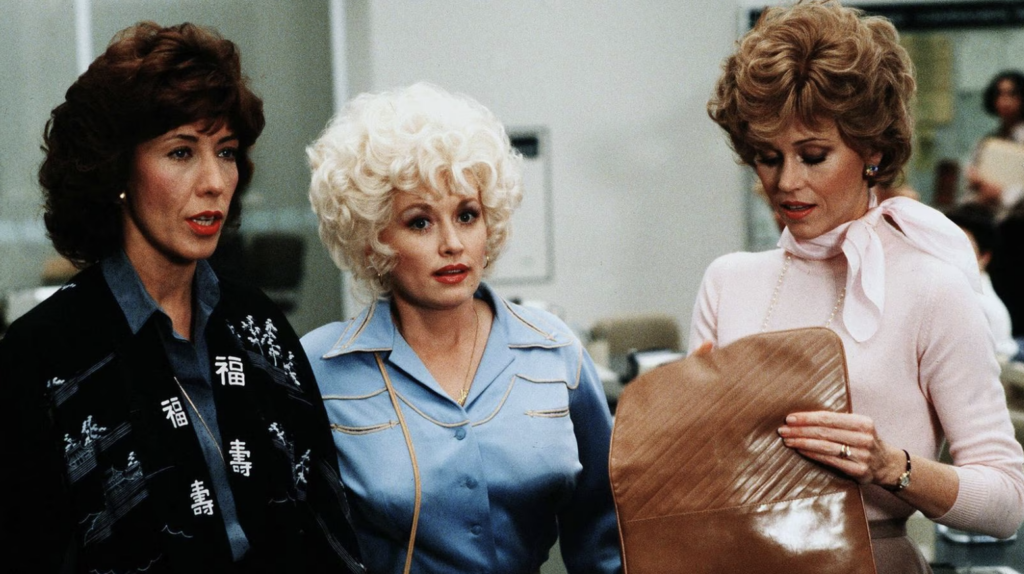
Bader: Were there other ways in which 9 to 5 was ideologically distinct from other women’s groups of the 1970s?
Cassedy: We wanted to make the typing pool a better place to work and while we welcomed women who wanted to rise up in the corporate hierarchy, we recognized that a lot of workers were happy in their jobs and did not want to be promoted to management. They simply wanted to be better paid and respected as secretaries.
Bader: How did 9 to 5 cultivate new leaders?
Cassedy: There are some folks who like to be out in front and others who prefer to stand behind them, but we need everyone to do what they can.
In the book, I stress that movements need all kinds of people, those who are natural leaders and those who are shy. I am in the latter category and like other more withdrawn people, my heart sometimes pounds when I get up to speak in public. But because I understood this, I was able to help other less ‘out-there’ women to push forward and develop their organizing abilities. I learned that over time, everyone can learn new skills—whether that means becoming a better listener, doing research, creating leaflets, or developing tactics and strategies to move workplace organizing forward.
Bader: Working 9 to 5 emphasizes the importance of celebrating small wins and keeping measurable goals in focus. That seems like great advice for every organization.
Cassedy: Once you show people that you can win, it becomes easier for them to band together in pursuit of a goal. We also always made sure to have fun. We followed our noses and recognized that it helped people get over their fear of standing up to their bosses if when we went at things in a joyful, even gleeful, spirit. It’s always better to be joyful than to read the bosses the Riot Act in a solemn voice.
At the same time, we tended to stick close to our goals, winning small changes like compelling employers to post job openings publicly.
There was, however, some tension over setting our sights only on winnable demands versus asking for the moon. For example, at first, we didn’t ask for raises, thinking it would be easier to win non-financial concessions. We soon learned that we were wrong. Changing the structure of a workplace proved harder than winning more money. Of course, our strategies were determined by the issues at particular work sites, but we always tried to focus on improving conditions for the majority of the workers.
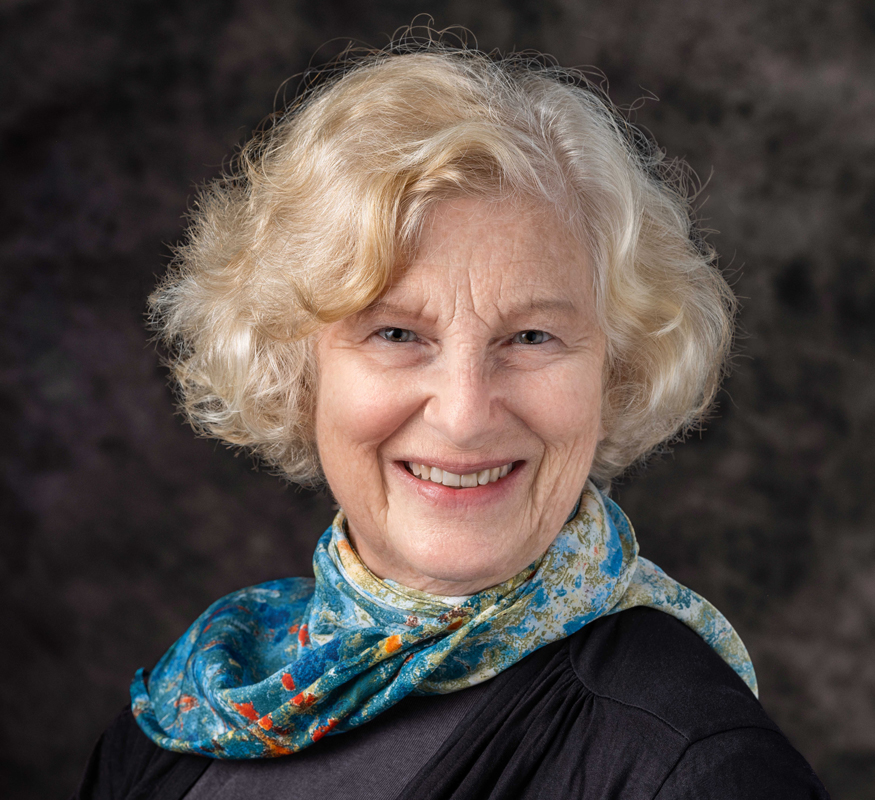
Bader: One of the most shocking elements of the book is your account of the sexism you encountered from male labor leaders, including one who told you that women were impossible to organize because they “think with their cunts, not their brains.”
Cassedy: We were like ships passing in the night. Here was a huge sector of unorganized workers, but many unions were actually not doing much organizing of anyone—male or female—in the 1970s. The Service Employees International Union (SEIU) and the American Federation of State, County and Municipal Employees (AFSCME) were exceptions, but it took a while for most unions to take notice of us.
Bader: But once the unions saw the potential gains of organizing office workers, it seemed as if they all got into the act. Did representation by many different unions weaken the cohesion of office workers as a united group?
Cassedy: Different worksites were organized by different unions and there was not a coordinated campaign to organize office staff. Sometimes that led to a healthy rivalry. Among the unions organizing office workers was our own nationwide District 925, an offshoot of the organization 9 to 5 that affiliated with the SEIU.
Bader: The Bill of Rights for Women Office Workers, drafted in 1974, contains 13 planks, starting with the right to respect as women and as office workers. It also includes the right to a written job description; the right to a detailed account of compensation and conditions of employment; the right to maternity benefits; the right to payment equal to that earned by men in similar job categories; and the right to access to promotions and other opportunities.
Were any of these issues contentious?
Cassedy: The process was great and helped us map our goals clearly and explicitly. We talked about what we deserved. I remember only one area of debate. Some of us wanted to include the right to employer-provided childcare, while others thought that was too pie-in-the-sky. A few years later, in the 1980s, we were thrilled with one big Boston insurance company took the lead in paying for childcare for its employees.
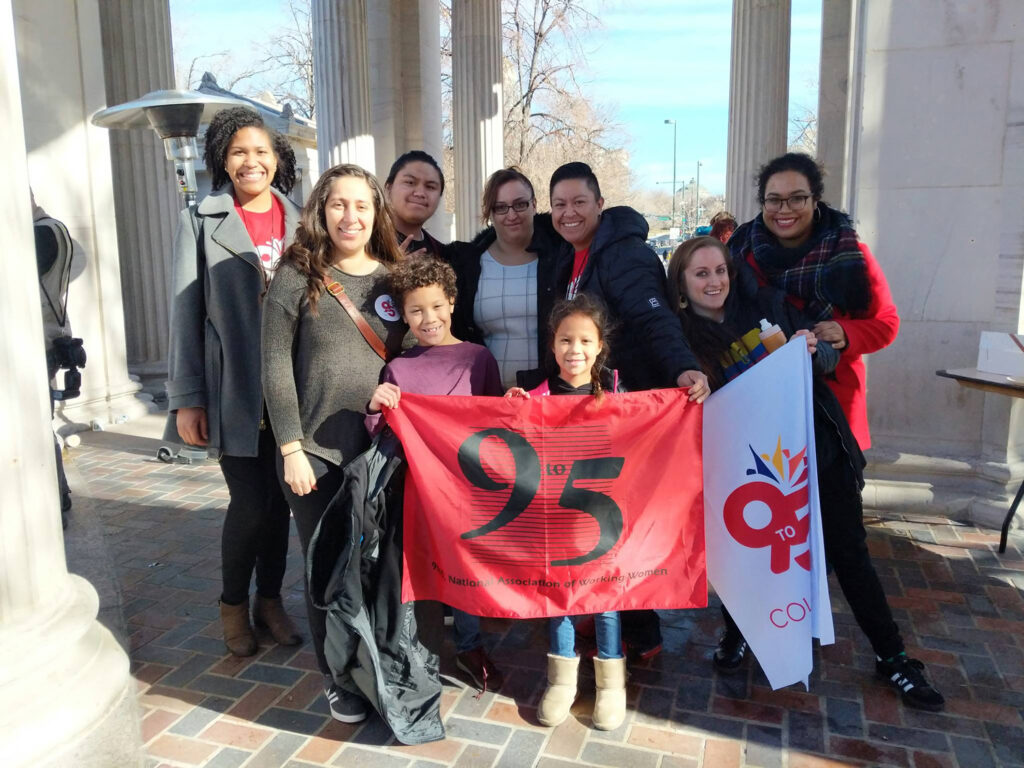
Bader: 9 to 5 had many wins in the 1970s, but the 1980s ushered in the ‘Reagan Revolution’ and labor organizing began to falter. Can you say more about what happened?
Cassedy: We were able to do a lot more during the Carter administration of the 1970s than we were when Republicans came into power in 1981. The GOP threatened to weaken equal employment and pro-labor legislation and by the 1980s employers were resisting the labor gains of the past few decades.
The economy had begun to change in the 1970s and the idea that all of us could rise together as Americans began to fray. Income inequality got much worse and employers began to go all-out in an attempt to crush unions. In fact, one of the first things Reagan did when he took office was to fire 11,000 air traffic controllers who’d gone on strike. Employers saw this as a sign that they could undercut organized labor and every union encountered pushback.
In addition, during the 1980s the union-busting industry became a powerful force; bosses began to refuse to bargain with their workers.
This is still happening today, with Starbucks and Amazon refusing to sit down and negotiate with employees. On the other hand, a recent survey found that 71 percent of Americans support unions, the highest percentage in a half century. This gives me hope that improvements can and will be won.
A recent survey found that 71 percent of Americans support unions, the highest percentage in a half century. This gives me hope that improvements can and will be won.
Ellen Cassedy
Bader: Looking back, are you pleased with what 9 to 5 accomplished?
Cassedy: We won a lot. Pregnancy discrimination is illegal. Sexual harassment is illegal. Of course, it’s still widespread, an emblem of the fact that sexual harassment at work is bound up with women’s power on the job. The wage gap between women and men has narrowed. ‘Help wanted’ ads no longer separate jobs for men and jobs for women. Managerial positions have opened up for women, especially those who are college educated. Issues that used to be considered personal are now matters of policy: corporate policy, government policy and union policy.
That said, we still have a long way to go. Many jobs remain dead end and the gig economy has forced some people to work two or three jobs to make ends meet. Many workers don’t have paid sick time or paid vacation and the relentless pace of work at companies like Amazon shows us what needs to be changed. Nonetheless, the current wave of organizing among tech workers, restaurant workers, grad students, congressional aides, and fast food and warehouse workers makes me optimistic.
On a more personal level, I’m proud that so many women gained skills thanks to their involvement in 9 to 5. We not only gained personal agency but we discovered that collective action could change the world. Fifty years on, we can celebrate that we lifted the floor, and not just the ceiling, and proved that multiracial and multiclass sisterhood and solidarity are possible.
Up next:
U.S. democracy is at a dangerous inflection point—from the demise of abortion rights, to a lack of pay equity and parental leave, to skyrocketing maternal mortality, and attacks on trans health. Left unchecked, these crises will lead to wider gaps in political participation and representation. For 50 years, Ms. has been forging feminist journalism—reporting, rebelling and truth-telling from the front-lines, championing the Equal Rights Amendment, and centering the stories of those most impacted. With all that’s at stake for equality, we are redoubling our commitment for the next 50 years. In turn, we need your help, Support Ms. today with a donation—any amount that is meaningful to you. For as little as $5 each month, you’ll receive the print magazine along with our e-newsletters, action alerts, and invitations to Ms. Studios events and podcasts. We are grateful for your loyalty and ferocity.





